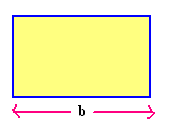Introduction to geometric solids patterns:
Geometry is a topic which deals with the shapes and sizes of any objects. The shapes are classified as solid and plane surface shapes. The geometric solids are the shapes that can be classified as cubes, cone, sphere, rectangular prism, hemisphere, etc. The geometric solid patterns can be explained with their properties. Here we see some of the solids pattern in geometry.
Classifying Solids Patterns:
Solids patterns can be classified into many shapes. We see some of them with properties.
Sphere:
It is a 3-dimensional solid shape pattern which does not have a base point. It is rounded in shape, as it is spherical. The parameters used in the solid sphere are calculated using the following formulas,
• Volume of a sphere = 4/3 ?r3
• The surface area of a sphere = 4?r2
It is rounded in shape, as well as spherical.
Cube:
The cube is also one of the three-dimensional solid shapes. It is made up of six equal sides with 12 edges and 8 vertices. Some parameters like volume of cube and surface area are calculated using the given formulas.
Volume of a cube can be found as a3
• Area of a cube is given as 6a2
Rectangular prism:
The rectangular prism is a 3-dimensional solid shape which is having six numbers of sides.
The formulas used to find the parameters of a rectangular prism are given below:
• The surface area of rectangular prism = 2(lb + bh + hl)
• Volume of the rectangular prism can be given as lbh
Where,
l is the length, b is the breadth and h is the height of the rectangular prism.
These are some basic geometric solid patterns.
Problems to Geometric Solids Patterns:
We can solve some example problems for geometric solids patterns.
Example1:
Find the volume of the rectangular prism if its length, breadth and height are given as 6 cm, 4 cm and 2 cm.
Solution:
Formula to find volume of rectangular prism is lbh.
On substituting the given values in formula, we get
lbh = `6 xx 4 xx 2`
= `24 xx 2`
= 48
Hence the volume of the rectangular prism is found to be 48 cubic cm.
Example 2:
Find the volume of a cube if the side is measured as 3 cm.
Solution:
Given that,
Side length = 3 cm
We know the formula to find volume of cube as,
Volume of the cube is a3 = 27
Hence the volume of the cube is given as 27 cm3.
Thus these are some examples to geometric solids patterns
Geometry is a topic which deals with the shapes and sizes of any objects. The shapes are classified as solid and plane surface shapes. The geometric solids are the shapes that can be classified as cubes, cone, sphere, rectangular prism, hemisphere, etc. The geometric solid patterns can be explained with their properties. Here we see some of the solids pattern in geometry.
Classifying Solids Patterns:
Solids patterns can be classified into many shapes. We see some of them with properties.
Sphere:
It is a 3-dimensional solid shape pattern which does not have a base point. It is rounded in shape, as it is spherical. The parameters used in the solid sphere are calculated using the following formulas,
• Volume of a sphere = 4/3 ?r3
• The surface area of a sphere = 4?r2
It is rounded in shape, as well as spherical.
Cube:
The cube is also one of the three-dimensional solid shapes. It is made up of six equal sides with 12 edges and 8 vertices. Some parameters like volume of cube and surface area are calculated using the given formulas.
Volume of a cube can be found as a3
• Area of a cube is given as 6a2
Rectangular prism:
The rectangular prism is a 3-dimensional solid shape which is having six numbers of sides.
The formulas used to find the parameters of a rectangular prism are given below:
• The surface area of rectangular prism = 2(lb + bh + hl)
• Volume of the rectangular prism can be given as lbh
Where,
l is the length, b is the breadth and h is the height of the rectangular prism.
These are some basic geometric solid patterns.
Problems to Geometric Solids Patterns:
We can solve some example problems for geometric solids patterns.
Example1:
Find the volume of the rectangular prism if its length, breadth and height are given as 6 cm, 4 cm and 2 cm.
Solution:
Formula to find volume of rectangular prism is lbh.
On substituting the given values in formula, we get
lbh = `6 xx 4 xx 2`
= `24 xx 2`
= 48
Hence the volume of the rectangular prism is found to be 48 cubic cm.
Example 2:
Find the volume of a cube if the side is measured as 3 cm.
Solution:
Given that,
Side length = 3 cm
We know the formula to find volume of cube as,
Volume of the cube is a3 = 27
Hence the volume of the cube is given as 27 cm3.
Thus these are some examples to geometric solids patterns










